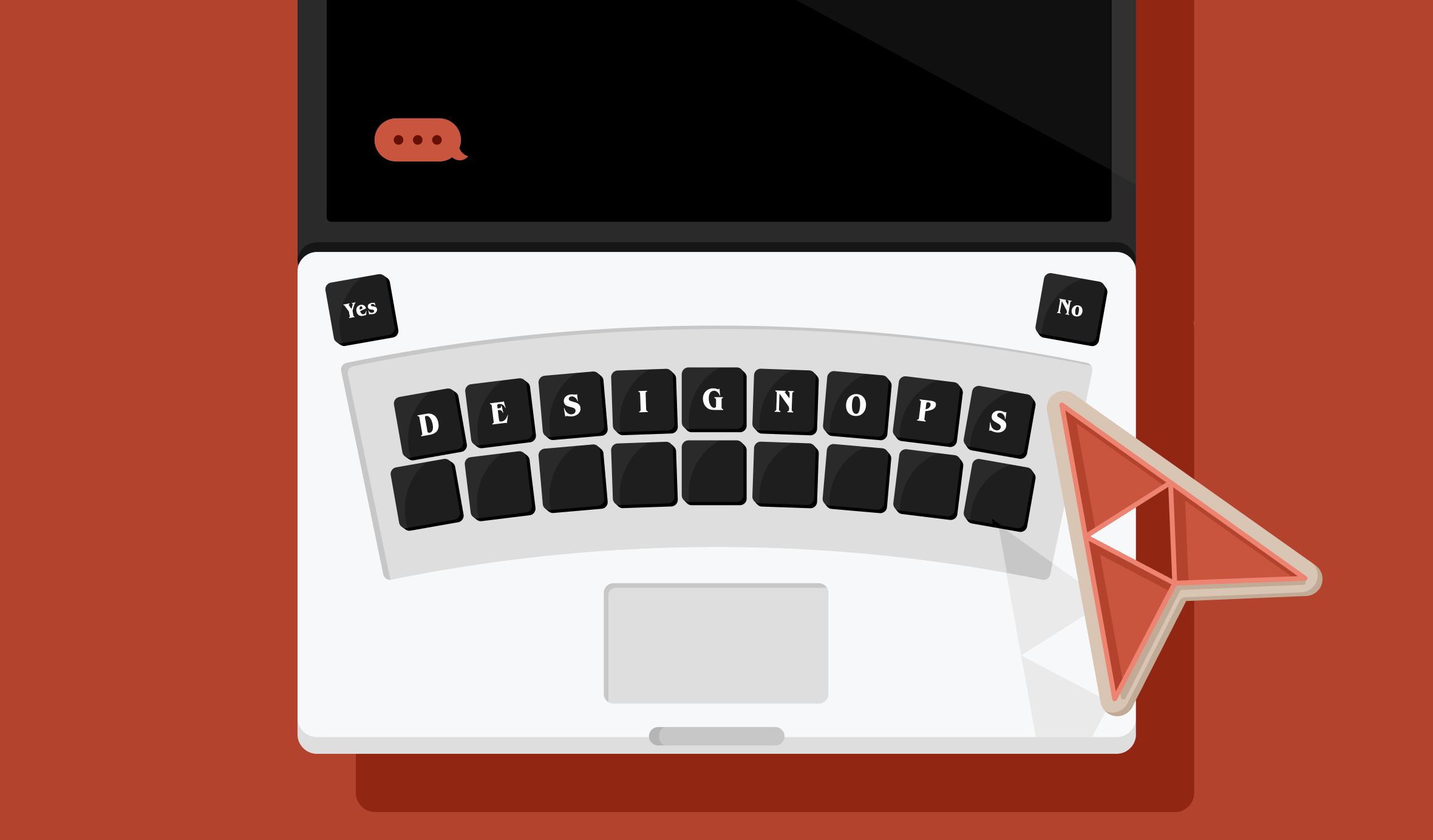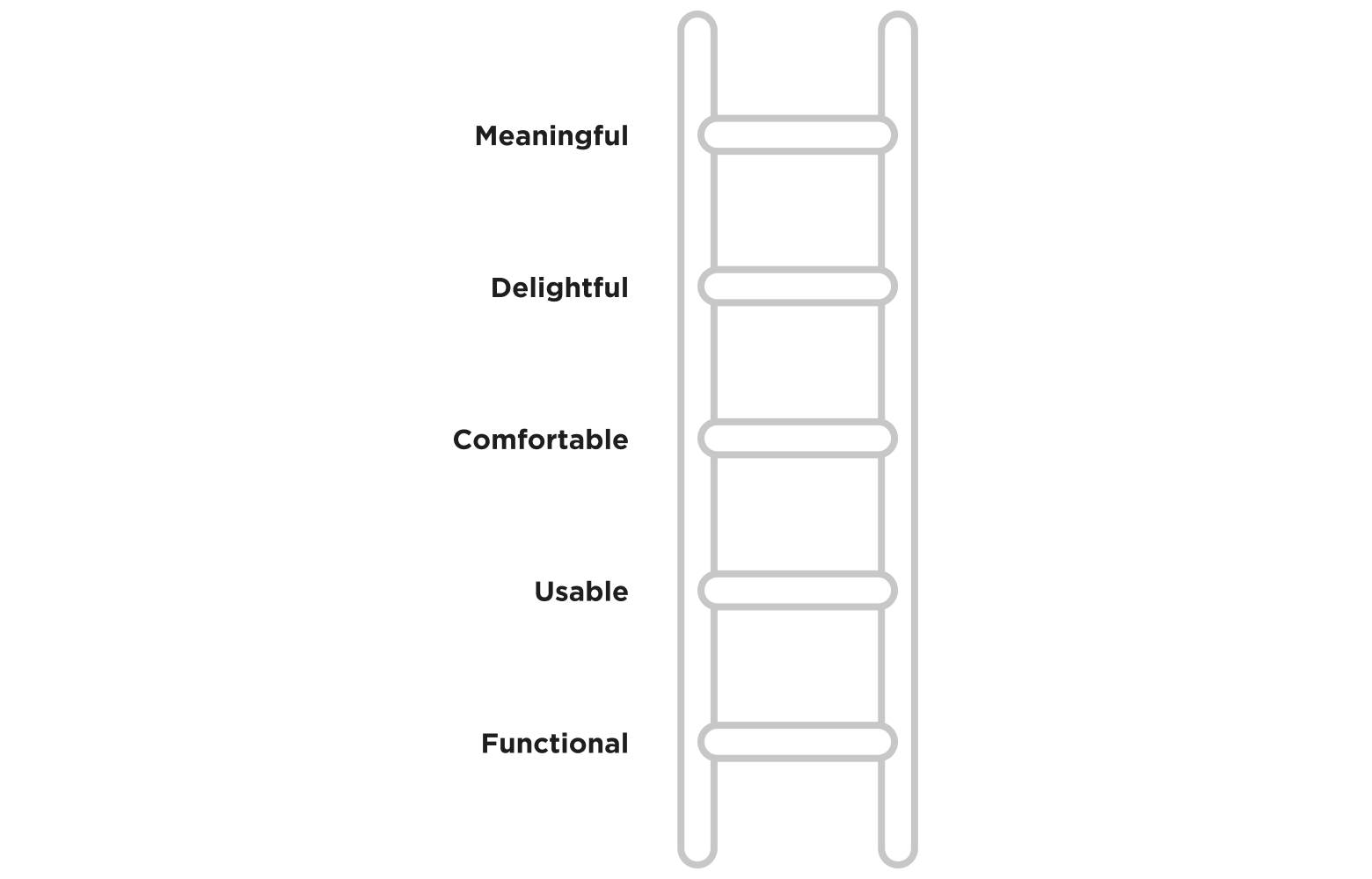DesignOps: The Invisible Problem Haunting Your Digital Products

Every design engagement we have with a client starts with a need. Usually, that need feels like an immediate UX problem requiring a clear-cut one-off solution.
But what we often find behind that immediate need is a deeper, more invisible problem. A gap in design leadership.
If you’re not having leadership-level discussions about your design strategy, then you’re not making the most of your designers. You're likely also losing product value.
Design is no longer (if it ever was) something that happens in a dark room in the back where the creatives get together to kick out pretty-looking things. It’s a strategic pillar that can make or break your product.
That brings more scrutiny around not only what good design is, but how good design gets done.
Executives want to know they’re getting the most out of their design teams. That puts pressure on design leaders and product owners to make efficient use of their budgets and prove real ROI.
Product and design teams must look for ways to optimize their efforts and not spend time re-creating the wheel.
That’s where DesignOps comes into the picture.
It’s no longer enough to have a stable of great designers each focused on their distinct specialty. Modern product organizations need processes that help designers create consistent high-quality designs across a wide range of products and services.
DesignOps elevate the conversation from simple design execution to design strategy. It considers how design, research, development, sales, marketing, and other teams work together to build brand consistency.
DesignOps is crucial for digital products to scale. It helps plan, define, and manage the entire design process, and the people and tools that lead to great design. When done well, DesignOps goes beyond design and development. It helps create a collaborative process of education and knowledge sharing across silos.
It's not only the foundation of a successful product, but it can be part of the glue that binds your organization together.
What is DesignOps?
DesignOps is a relatively new term in the UX industry that’s emerging as an inescapable piece of product success. But what does it mean, exactly?
Nielsen Norman Group defines it this way:
DesignOps refers to the orchestration and optimization of people, processes, and craft in order to amplify design’s value and impact at scale.
Traditionally, design has been implemented with a one-track mindset. You have a specific design problem or need and you create solutions to address it.
That approach worked in the early days of digital product development when teams were primarily focused on a single product with a distinct design. But what happens when your team is tasked with working on multiple products, or you have multiple teams working on different parts of a big complex product?
You have multiple product owners trying to solve the same or similar problems with slightly different features and designs based on the skills of their teams, the immediate problem they’re trying to solve, and the unique pressures of their organizational alignment.
Many organizations end up with three different products all trying to solve a similar problem.
Up to this point, design libraries and systems have been an integral part of addressing this problem. They’re still important tools to help drive consistency and organize design elements and component libraries.
But what happens when a developer is faced with the decision of which element to use in a specific situation? One developer might choose a breadcrumb navigation in one part of the product, while on a similar screen in another part of the product a different developer chooses a Back button.
These decisions may feel like raindrops in the ocean, but they add up over time and start to erode the quality and consistency of the user experience, thereby depleting the value of the overall product itself.
DesignOps provides a structure to help the individual team members understand how their individual pieces fit into the overall product. It provides a leadership-level conversation about how to implement design choices and what those decisions mean for the success of the product as a whole.
DesignOps is the next step in your UX evolution
There’s a chicken and egg scenario when it comes to building DesignOps.
On one hand, DesignOps feeds into your UX maturity as an organization by more thoughtfully architecting and articulating your vision for the product.
On the other hand, you can’t build your DesignOps without some level of existing UX maturity, or at the very least a commitment to improving it.
Some organizations are ready to build their UX maturity by implementing DesignOps into their organization at a leadership level. Other organizations aren’t in a financial position to do that just yet.
Organizations leverage the Drawbackwards Ladder as a way to create a common language around their UX evolution. It gives everybody in the organization, from the C-suite to designers, a model for understanding your team’s overall UX maturity and gauging how far you have to go to reach the next level of product success.

To be successful at the top three rungs of the Ladder, you need a strong foundation of DesignOps either embedded in-house in your team or through a partner like us. Once your product gets to Comfortable, the only way up to true Delight and Meaning is through strong design leadership.
That means you have a CXO (Chief Experience Officer) or the equivalent advocating for users in C-suite conversations.
We’ve found repeatedly that our client engagements, no matter how they begin, naturally evolve into some discussion related to DesignOps. It’s inevitable. You can’t escape the need to think through how to make your design processes more efficient and your design products more consistent.
There’s no one-size-fits-all approach when it comes to DesignOps. Each organization is at a different place in its path to UX maturity. Each product team has different friction points in its processes.
Drawbackwards to DesignOps
It’s funny to see a term suddenly coined for something we’ve been doing for years - helping clients think more strategically about the value of good design.
Over more than 20 years of working with clients on a range of products, we’ve built the UX maturity to help boost you and your team. We know how to create the environment for these conversations. We can be long-term partners who serve in a leadership role to guide you on your own path to a more mature DesignOps practice.
We can help you build out a junior team of designers eager to learn and we can be your internal UX leadership voice until you have the resources to carry that responsibility yourself.
If you’re already committed to building your leadership into a mature UX mindset, we’ll support you as long as it takes for your DesignOps to become self-sufficient.
We customize our approach to your needs and the reality of your situation by starting with a discovery phase that can help you determine your current UX maturity level and areas for improvement. Based on where you are today, we’ll determine the DesignOps elements that will help you get to the next level.
Do we need to help you build out and manage your long-term product roadmap? Maybe you need more alignment and coordination on what different teams are delivering. Or maybe you need a holistic outsider’s evaluation of your entire product and user or customer experience.
We’ll be your leadership consultants to design an approach that fits your needs and suggest projects that will get you on the path to more efficient DesignOps. Whether it’s pitching a big design vision to your leadership team, or designing a year-long coaching plan for your in-house designers, we’ll create a plan that fits your specific needs and situation.
Drawbackwards can be your CXO, making sure that your users are central to your strategic conversations.
We’ll interface with the CTO or CIO around building a strong design system and integrating it into the overall development workflow. We’ll work with leaders across your organization, from marketing to product to development, to make sure they understand the value of good DesignOps. We’ll stand side-by-side with your product owners to show your leadership how a good DesignOps discipline can drive real business results.
There are high stakes involved. It’s no longer enough to deliver digital products and experiences that are just functional or even usable. The consequences of bad design are lost profits and lower value to shareholders.
On the flip side, the potential benefits of UX maturity and strong DesignOps are exponential.
We partnered with the chief product officer for Matrix Medical to deliver $10 million in annual labor savings by reducing visit times for in-house medical check-ups and improving the clinical documentation and accuracy in the process.
We quadrupled the design and development pace for Act! by aligning their teams around a clear and definitive design thinking process. Instead of throwing things at the wall to see what would stick, we helped them build solid DesignOps practices that ensured they got the right solution the first time.
What can we do for you? Let’s talk about how we can help you build a DesignOps practice that will take your product to the next level.